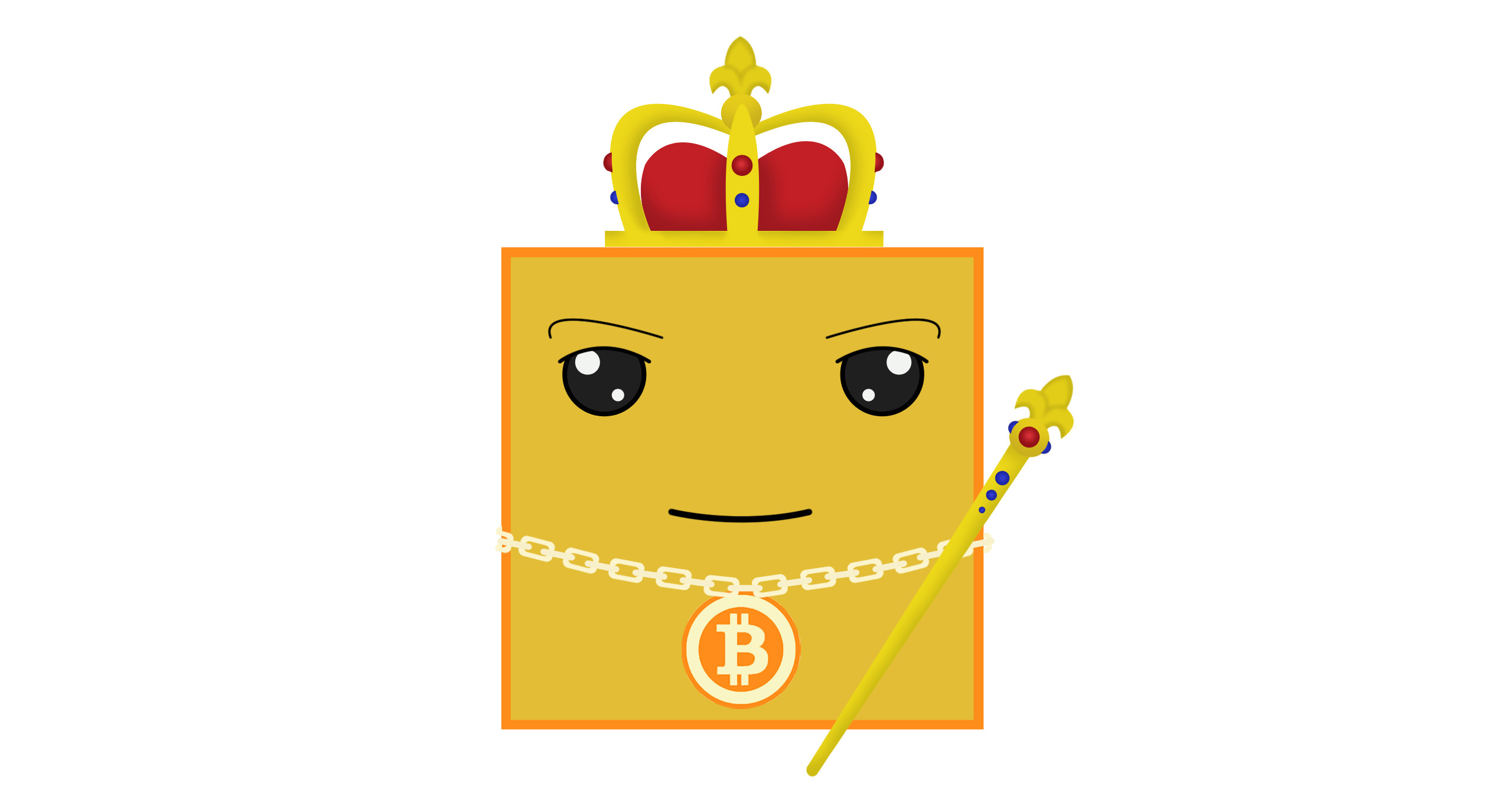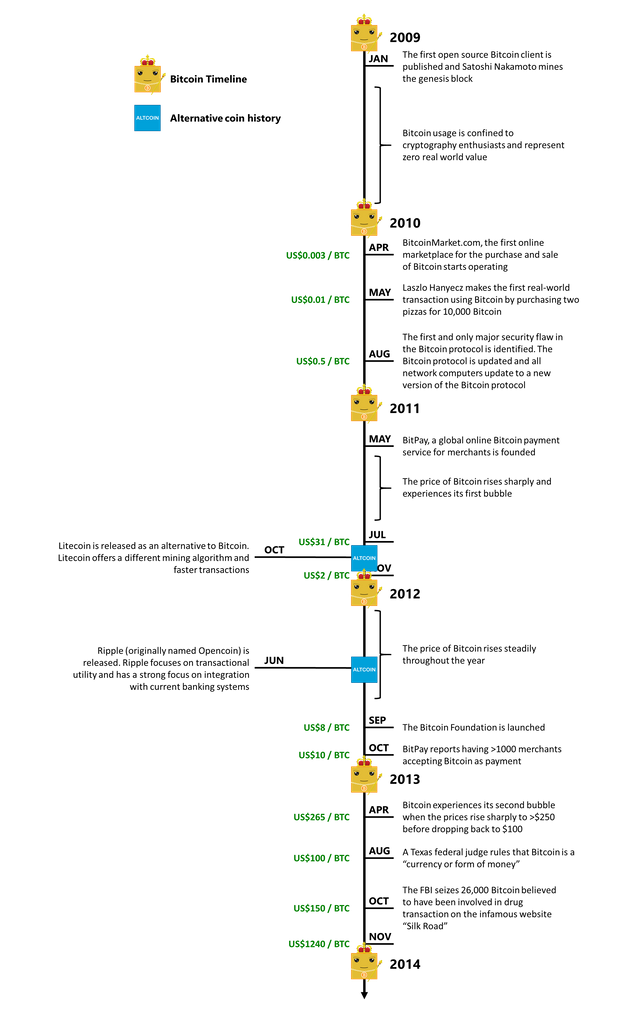A brief history of blockchain

Prologue
A long time ago in a galaxy far, far away…. A mysterious white paper titled “Bitcoin: A Peer-to-Peer Electronic Cash System” was released under the pseudonym Satoshi Nakamoto. The paper described, in their own words, “a system for electronic transactions without relying on trust”.

The time was November 2008 and the galaxy far, far away was the internet. This is the real life history of Bitcoin. To this day, nobody knows for sure who Satoshi Nakamoto is/was. What we do know is that the first open source Bitcoin client was released in January 2009 and over the next couple of years, Satoshi Nakamoto amassed around 1 million Bitcoins before disappearing completely from the Bitcoin scene around mid-2010. To this day, their vast Bitcoin fortune remains untouched, spread across several known Bitcoin accounts. The total value of their Bitcoin as of mid-2017 is around US$4 billion.
PS. If you haven't already, check out our first blog post titled 'What the hell is blockchain?' for an introduction to Bitcoin, cryptocurrency and blockchain technology.
The History of Bitcoin

The 2009 launch of Bitcoin was the first real life application of blockchain technology. For the next five years, the history of blockchain would remain nearly synonymous with the history of Bitcoin. Below is a rough timeline of this period:

The History of Ethereum
2014 would mark an important milestone in the history blockchain. Until then, the application of blockchain technology had been limited to cryptocurrency. Although the Bitcoin protocol had proven itself in that realm, it lacked the scripting language required to develop blockchain applications with functionality beyond simply serving as a cryptocurrency. Enter Vitalik Buterin:

Vitalik had been a prominent Bitcoin enthusiast for several years and had already co-founded Bitcoin Magazine in 2012 at the ripe old age of 18! After failing to gain agreement within the Bitcoin community to update the original Bitcoin protocol, Vitalik gathered a team of super programmers to develop a brand new blockchain protocol featuring so called smart contracts that would allow programmers to build scripts into his blockchain that act as contractual agreements and execute when certain conditions are met. Vitalik named his new blockchain Ethereum

Using a smart contract on the Ethereum blockchain requires mini payments of Ether, the cryptocurrency of Ethereum. These mini payments are called “gas” and are rewarded to the computer node that solves the block containing the transaction. The use cases for smart contracts are incredibly diverse and it is likely that we won’t fully understand their usefulness for many years to come (just like we had no idea how Facebook, YouTube and Skype would change the world when the internet was being developed in the early 90’s).
A simple example that helps to describe the usefulness of smart contracts is a decentralized lottery. In this example, a smart contract that has the following functionalities is developed and stored in the Ethereum blockchain:
- Anyone can send Ether to the smart contract.
- Every 24 hours the smart contract randomly selects one contributing address and returns all the Ether in the contract to that address.
- The more Ether you contribute, the higher your chances of winning.
Because the smart contract is stored on the Ethereum blockchain, its contents are public and anyone can inspect it to make sure it doesn't contain any bugs or funny business. Nobody (even the developers) are able to access the funds stored on the smart contract. In theory, such a lottery could work with minimal operational expenditure (only the cost of gas and any other royalties or expenses the creator of the program built into the smart contract). The advantages of such a lottery over traditional lotteries are tremendous:
- The odds of winning can be dramatically improved since the operational expenditures are reduced.
- The entire system is completely transparent and each participant will be able to calculate exactly what their chances of winning are before entering the lottery.
- Because it is fully decentralized, the blockchain lottery would be immune to bankruptcy as well as many other external risk factors.
- Payouts are guaranteed and instantaneous.
- Participation is pseudo-anonymous.

Since its launch in 2014, the Ethereum blockchain has gone through a significant growth period and is now second only to Bitcoin in the who’s who of blockchains. The below timeline shows the history of Bitcoin, Ethereum and other major blockchain related events from 2014 onwards.

Where to from here?
Now that you know a little bit about the history of blockchain lets have a brief look at its future. As discussed previously, the decentralized nature of blockchain applications offer significant advantages compared to traditional methods of accounting and record keeping. In the last 12 months, blockchain technology has taken a significant step towards mainstream recognition with hundreds of blue chip companies investing heavily in its infrastructure (Finextra). Nearly all the major consulting firms have publicly declared their bullishness on the potential impact of blockchain technology on a range of industries (Accenture, Reuters, Deloitte, PWC) and some analysts are forecasting absolutely massive price increases in the coming decade (NewsBTC, CNBC, Money Morning). While we don't claim to possess a crystal ball, and there are certainly plenty of obstacles in the way of mass adoption, the future of blockchain technology seems brighter than ever.

Did you enjoy this blog post? Did we miss any important blockchain milestones? What is your take on the future of blockchain? We would love to hear from you on our message board below! Our next blog post will provide you with an overview of what we call the blockchain ecosystem. Hope to see you there!
this is really indeed amazing ,,, i wonder why people dont come read this lovely and amazing article here ,, just so educative
So valuable. I'm following your posts.